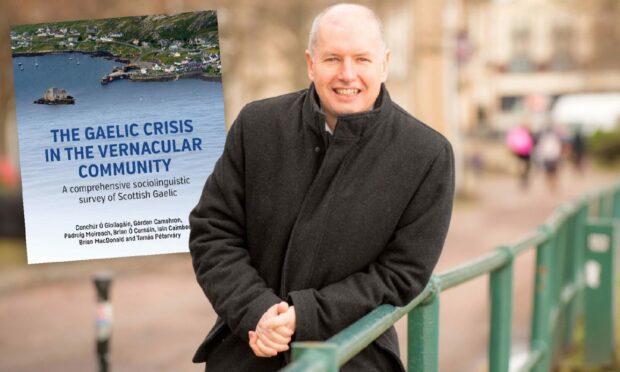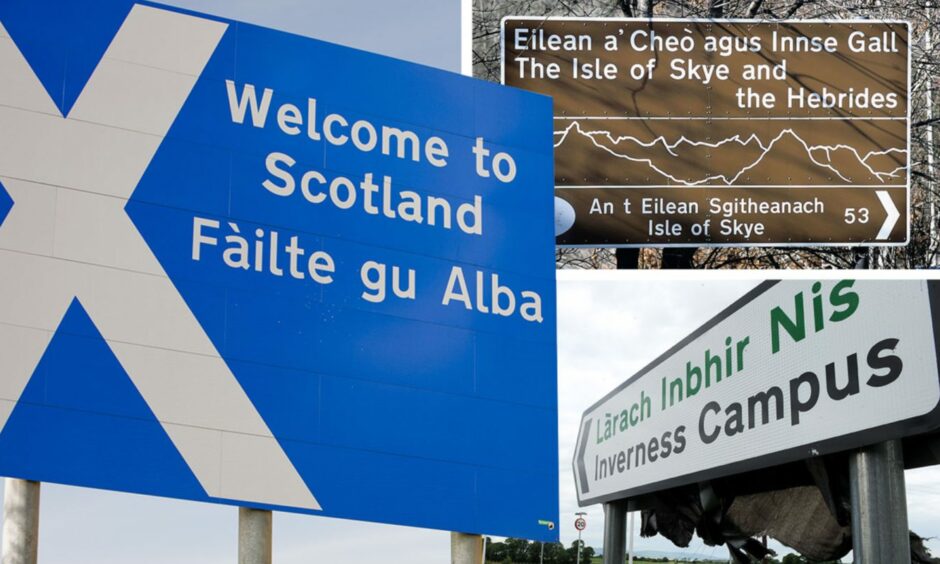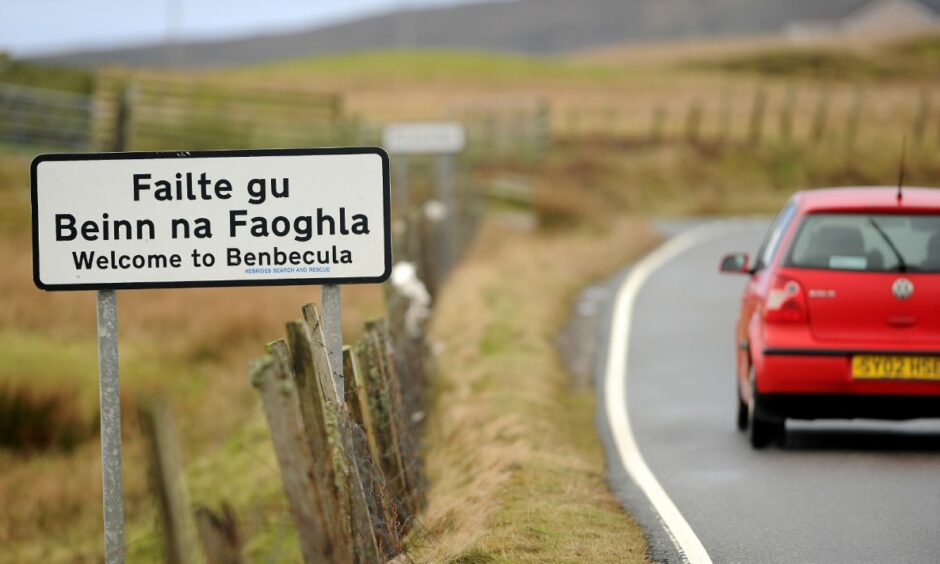A crisis facing Gaelic is being ignored by official bodies who are in denial about the language’s “impending social collapse”, a leading critic claims.
Professor Conchúr Ó Giollagáin, who wrote a damning appraisal of Gaelic’s decline two years ago, says radical new approaches are needed.
He says there is “official disregard” of the situation and blames lack of public support, weak management, complacency and an unwillingness to change.
The Gaelic Crisis in the Vernacular Community was compiled in 2020 by the University of the Highlands and Islands (UHI) Language Sciences Institute and Soillse, a multi-institutional research collaboration.
What did the ‘crisis’ report say?
Researchers studied the use of the language in the Western Isles, Staffin in Skye and Tiree.
In these areas, Gaelic speakers could total just 11,000, most of them over 50.
The report warned Gaelic will collapse as a viable community language within a decade unless a new approach is taken to revitalise it.
It led to claims that Gaelic-speaking communities have been ignored and marginalised by policy makers and called for more local decision-making.
A conference this week in Stornoway is the first post-Covid opportunity for academics and policymakers to have face-to-face discussions on the report.
Addressing the event, Prof Ó Giollagáin said the official reaction to the report indicates a “worrying aspect of Gaelic affairs” which needs to be overcome to have any feasible chance of progress.
He listed a number of “major strategic impediments” including –
“A policy framework which has produced insufficient public support and budgets for Gaelic communities
“Weak management of a one-size-fits-all approach to key social issues of Gaelic sustainability
“Unwillingness to look beyond a support structure which favours the established client status of existing Gaelic bodies
“Complacency among senior policy officials, and their advisors, ‘who have steadfastly refused to enter any meaningful discussion to even consider new approaches’.”
He commended consultations on the crisis report, including those by Western Isles MSP Alasdair Allan with a cross-party group of MSPs and Soillse.
A subsequent report put forward recommendations, including consideration of a Gaelic-language development trust (Urras na Gàidhlig).
Gaelic communities ‘being consulted back to the status quo’
But Prof Ó Giollagáin said, despite these consultations, the community has been led back to the original policy framework in which the Gaelic social crisis emerged.
“In other words, the remaining Gaelic communities have been consulted back to the status quo.”
He said some people have sought to create a “hostile environment” around the Gaelic Crisis debate which risks “descending into a lose-lose scenario of public ostracism”.
Prof Ó Giollagáin says there is an “obvious democratic deficit in language politics” in which nearly all aspects of Gaelic affairs in Scotland are dominated and controlled by a group of no more than 20 individuals.
In a time of crisis radical alternatives to the status quo are called for.
Professor Conchúr Ó Giollagáin,
While recognising constraints on development agency Bòrd na Gàidhlig, he said the core issue is the “irrelevance of the current approach to the level of societal challenges experienced by the remaining Gaelic communities”
He added: “In a time of crisis radical alternatives to the status quo are called for.
“Bòrd na Gàidhlig, and many of those ensconced in their client system, cannot have it both ways.
“(They) claim that the current policy approach is adequate to address current challenges and, at the same time, ignore the limitations in the policy which hinder meaningful engagement with the social reality of the language group in decline.
“The approach to date of Bòrd na Gàidhlig to the public debate around the Gaelic Crisis book is marked by evasiveness, denialism and a refusal to engage with the implications of the documented evidence.
“This raises the question about what purpose Bòrd na Gàidhlig serves in their refusal to engage with the social reality of Gaelic communities.
“Acquiescing in this denialist approach only serves to minimalise or indeed simply ignore the problem of the impending social collapse of the remaining vernacular communities.”
He suggests “as a matter of priority” responsibility for Gaelic affairs be shifted to communities, councils and Highlands and Islands development bodies.
“This new focus is required if there is to be any hope of gaining societal and official traction with the issues underpinning the current crisis in the vernacular community.”
Conference can help reset public debate
He hopes this week’s conference will help “to make up for lost time” and reset the public debate to focus on “the social reality of being a member of a highly threatened speaker group”.
A spokesman for Bòrd na Gàidhlig said extensive community consultations have been conducted across Scotland in recent weeks as part of developing the next National Gaelic Language Plan.
“These discussions again underlined the importance of wider social and economic issues that are affecting our island Gaelic communities, including housing, transport, and connectivity.
“The feedback from the consultation will be central to final draft of the next National Gaelic Language Plan.
“Bòrd na Gàidhlig also ensures that the Gaelic voice is heard loud and clear in the development of national strategies and policies which affect island and urban communities.
“Our key mission is to grow Gaelic and our funding of 60 Gaelic development officers across Scotland is central to this aim.
Half of these development officers are based in island communities, the agency says, “to ensure that Gaelic remains a relevant and engaging aspect of daily life,”
A Scottish Government spokesman said: “Gaelic is significant part of Scotland’s culture and this government is committed to see it thrive and grow.
“Which is why we launched a national consultation last week aimed at ensuring a robust future for the language.
“Public authorities and Gaelic organisations always listen closely to voices from Gaelic communities when devising policy.”
Increased numbers in Gaelic education
He said the situation for Gaelic speakers has improved in the last decade, with increased numbers in Gaelic medium education and more initiatives to support the language.
“We now need to build on what is in place.
“The consultation will show how we can make our measures more effective, ensuring Gaelic medium education continues to grow and provides a high quality education, that Bòrd na Gàidhlig operates effectively in the promotion of Gaelic, and consideration is given to the creation of a Gàidhealtachd.”
Are you interested in more exclusive and breaking Highland and Islands news from the P&J? If so, why not join our dedicated Facebook page HERE




Conversation